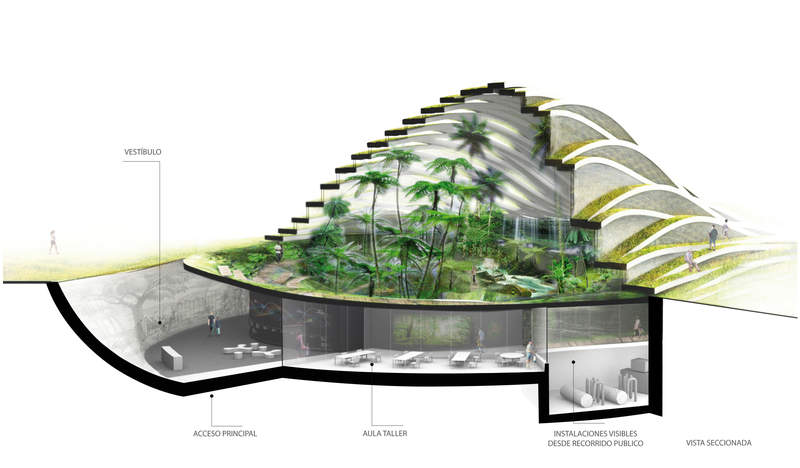The Carboniferous Forest Museum is part of the Spanish Museum of Energy (Museo Nacional de la Energía in Spanish) and it is located in the city of Ponferrada. From its inception, the project has sought the full in tegration of the architecture into the existing landscape, which represented the return to the carboniferous period, evoking the imagi nary resurgence of those forests that turned into coal seams after being buried. A bubble full of a forest re-emerging from the bottom of the earth was imagined and the outer part of the bubble intends to simulate folds occurred during a very active tectonic period. The project is therefore based on a bubble consisting of a natural dome parametrically de fined to optimize its solar behavior, involving an extremely complex structural performance.
The roof is a free-form consisting of a suc cession of flat sections with a certain degree of structural connection. Each section may be understood as a flat arch with maximum spans of 35 m and varying segmental arches between 1:4 and 1:10 (the greatest segmental arches correspond to the shortest spans, i.e. 20 m). Connection between mutually braced strips and the arch is crucial for the operation of sections on their plane. This prevents the structure from being destabilized by lateral stresses such as headwind. As a result, each arch may be de signed as a 3D truss with a minimum depth of 0.50 m. The section consists of two curved up per and lower chords and trusses on all 4 faces. The free-form of the roof adapts to the succes sion of circumference arches with tangencies on contact points to enable the production of tubes with a steel folding machine. Main tubes’ depths are 100 and 120 mm and thickness varies be tween 5 and 10 mm. Eventually, the great concrete bottom vessel containing both maintenance installations and the forest works as a huge tension ring and en closes the roof.
